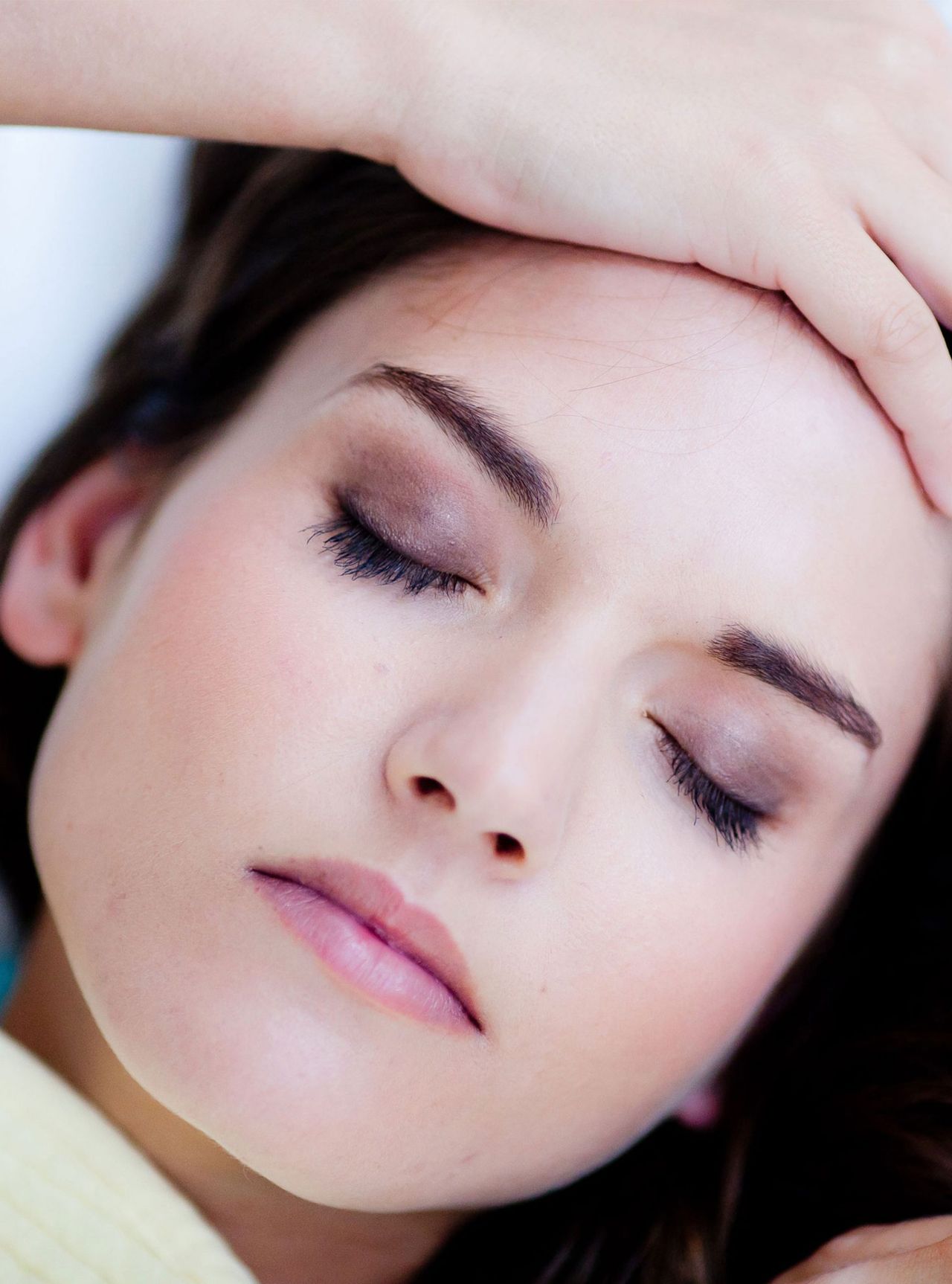New Ways To End The Misery Of Migraine

Experts Dr Brennan Davies, Professor Peter Goadsby and Dr Andrew Dowson explain migraine in more detail.
Pains like migraines and tension headaches have plagued sufferers and puzzled doctors for centuries. For one in five women and one in 15 men, the thundering, one-sided headache intensified by movement, the crippling nausea and sometimes vomiting, the acute sensitivity to light, sound, smells and/or touch, are all too familiar.
Doctors now recognise migraine as a complex neurological condition with several distinct stages. "New research techniques plus sensitive MRI scans are leading to a greater understanding of underlying mechanisms," explains Professor Peter Goadsby. And the good news is this is leading to new treatments.
What Causes Migraine?
Until fairly recently, migraine was attributed to widening of blood vessels inside the head. But experts now believe that it results from certain brain regions becoming oversensitive to changes, such as dehydration, sleeping too much or too little, skipping a meal, strong smells, sunlight, even changes in weather or certain foods. This leads cells in the trigeminal nerve, the brain's largest nerve serving the face, to release pain-producing chemicals, which makes the nerves acutely sensitive. This in turn leads to the normal pulsating of blood in those vessels being experienced as excruciating, throbbing pain. Before the pain sets in, one in five sufferers experience auras - unnerving neurological disturbances such as dark or coloured spots, sparkles, "stars", and zigzag lines, numbness or tingling, tinnitus, or touch disturbances, dizziness and vertigo.
A Jab To Prevent Migraine?
Four injectable drugs, the first ever to specifically target migraine, could be available on prescription as early as next year. Known as CGRP monoclonal antibodies, they work by reducing the effects of a key culprit in migraine pain, a compound called calcitonin gene-related peptide (CGRP). "It's a very exciting time as we have the potential of groundbreaking new treatments capable of stopping migraine before it starts", says Dr Brendan Davies, chief UK investigator for two of the new drugs.
Sign up for the woman&home newsletter
Sign up to our free daily email for the latest royal and entertainment news, interesting opinion, expert advice on styling and beauty trends, and no-nonsense guides to the health and wellness questions you want answered.
Triggers Revisited
It was previously thought that there was a simple relationship between migraine triggers and symptoms. Sufferers ate chocolate, for instance which sparked migraine. But here too there has been a rethink, "in controlled conditions, exposure to triggers doesn't always bring on migraine," says Dr Davies. Instead, research suggests, many triggers - such as craving chocolate - are actually part of the first stage of migraine, caused in the case of chocolate by changes in the brain region that regulates appetite.
Are Genes To Blame?
It's thought genes could be the bullets that load the gun. Three potential genetic culprits that increase excitability in the brain have been identified, but others are likely involved too, which interact with the environment to cause migraine.
Hormone Headache?
Menstrual migraines affect two in five female sufferers. Thought to be triggered by the fall in oestrogen before menstruation, it may be exacerbated by fatty acids involved in pain. Menopause brings relief for many but it may get worse first - 45 per cent report worse migraines perimenopausally. HRT helps some people but exacerbates things for others. Clonidine (dixarit), a blood pressure drug, may help.
Treatment Tactics
The most popular treatments are over-the-counter painkillers or anti-inflammatories, anti-sickness medicines, low dose aspirin, and/or triptans. If symptoms are severe, anti-seizure medications, blood pressure drugs, certain antidepressants and/or botulinum injections may be prescribed.
Drug-Free Treatments
NICE has approved three gadgets that can help prevent or ease migraines. They can be accessed via specialist clinics but are occasionally available on the NHS via your GP or to buy or hire.
A headband worn for 20 minutes a day delivers micro-electrical impulses to stimulate the trigeminal nerve, triggering endorphins.
A small device placed next to the pulse point on the neck, it stimulates the vagus nerve to restore the balance between chemicals that excite and calm the brain.
A rechargeable handheld device that delivers a magnetic pulse to the back of the head. It is thought to interrupt the brain hyperactivity that causes migraine.
How You Can Help Yourself
Keep a diary
It will help identify patterns over three months.
Pace yourself
Aim for regular meals, the same sleeping hours and, if possible, maintain equilibrium. Exercise
Latest research shows that regular exercise (40 minutes three times a week) can help to reduce attacks. Supplement it
Vitamin B2, magnesium and CoQ10 have all been used with some success.
Consider acupuncture
Some find it helps ease pain and prevents attacks.
-
 The White Company's Hypoallergenic Mattress Topper is surprisingly affordable and a dream to sleep on
The White Company's Hypoallergenic Mattress Topper is surprisingly affordable and a dream to sleep onThe The White Company Hypoallergenic Comfort Topper offers a gentle, supportive layer to your sleep set-up for a surprisingly affordable price.
By Laura Honey Published
-
 Gwyneth Paltrow’s classic pinstripe pyjamas will keep you cool and comfortable on warm nights
Gwyneth Paltrow’s classic pinstripe pyjamas will keep you cool and comfortable on warm nightsChic and comfortable? Her stylish pyjama set is our new go-to
By Charlie Elizabeth Culverhouse Published